Thomas Dickerson is leading the way for the next generation of custom builders.
He spent his childhood building with LEGO® bricks; not cars. He grew up watching TV-famous builders like Chip Foose, Dave Kindig, and Aaron Kaufman. And these days, he designs components from scratch using CAD software and produces them with CNC-machined precision.
The result is this stunning 1967 Mustang fastback that subtly and seamlessly blends aggressive classic styling with a modern chassis and interior amenities. Incredibly, it’s Thomas’s first build, and likely the first of many. His ultimate goal is to be known for high-quality builds that reflect his design philosophy, as well as offering resto-modded Shelby Mustang tribute cars.
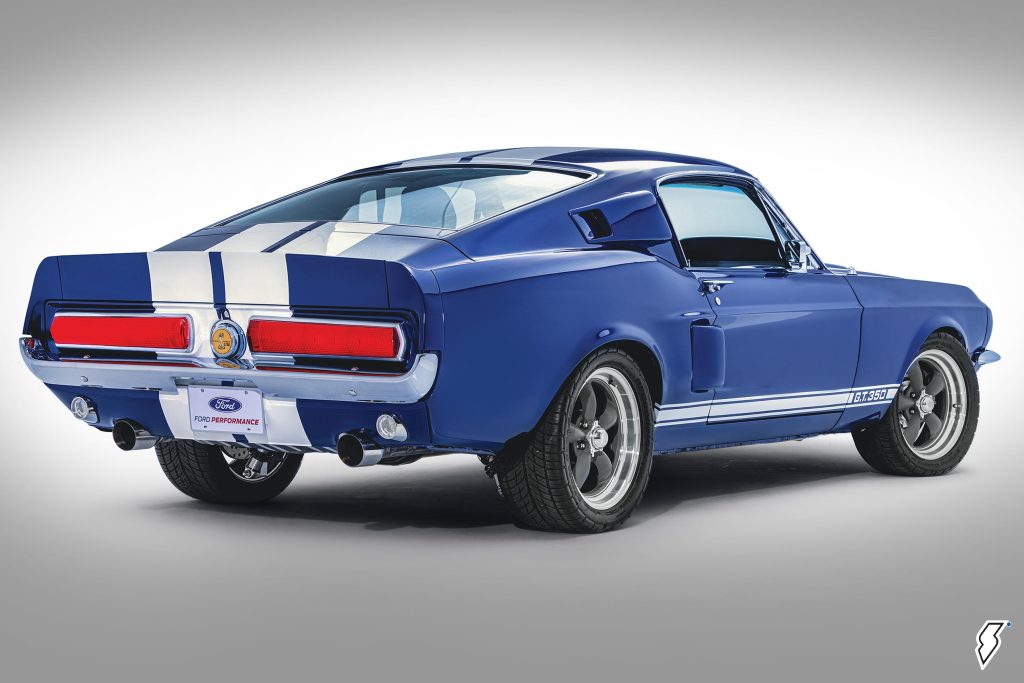
It might be natural to view the SEMA Young Gun Top 10 winner’s ambitious plans with a degree of skepticism. He completed the three-year build at just 21 years old, learning and honing his craft at Athens Technical College in Georgia. But Thomas is familiar with doubt and adversity. “When I got the car, there were a lot of people who said, ‘This isn’t something you’re going to be able to do, this is something that’s going to take you years and years and years,’ just because I was young,” he said.
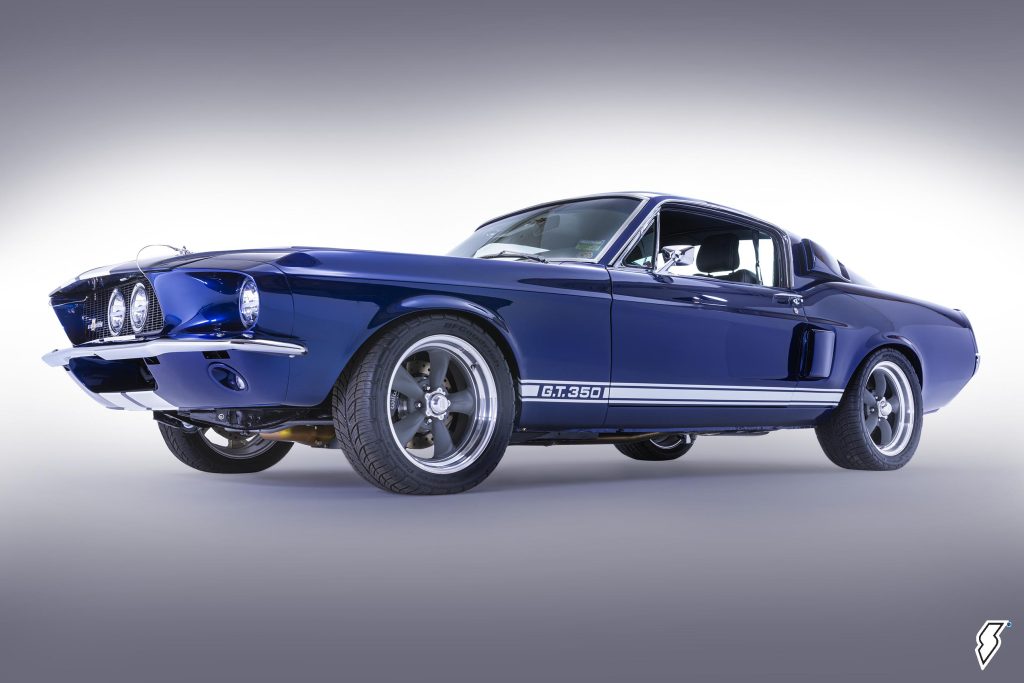
Not surprisingly, Thomas draws inspiration from the legendary Carroll Shelby—a model of tenacity. “That was probably what got me into the car. There was something I could connect to. Learning about his story growing up and all the difficulties he went through just trying to get started.”
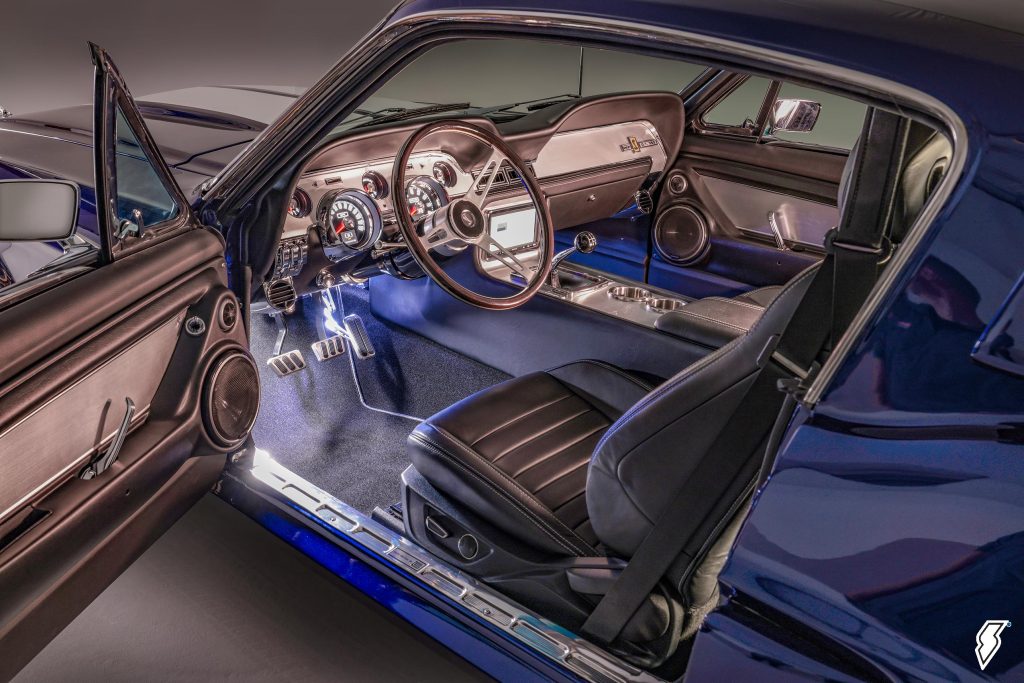
The obvious question is, how does a guy with essentially no practical automotive experience get to this level so quickly? While Thomas’s parents, Joe Ed and Sharyn, are supportive, there were never any muscle car projects or race cars in the garage. “My dad kinda always liked cars, so we’d go to car shows and stuff like that. I watched a lot of car shows on TV. ‘Fast and Loud,’ Richard Rawlings and those guys, Aaron Kaufman,” he said. “Watching the shows on TV, I just thought it’d be cool to build a custom car, so that’s really what pushed me into it.”
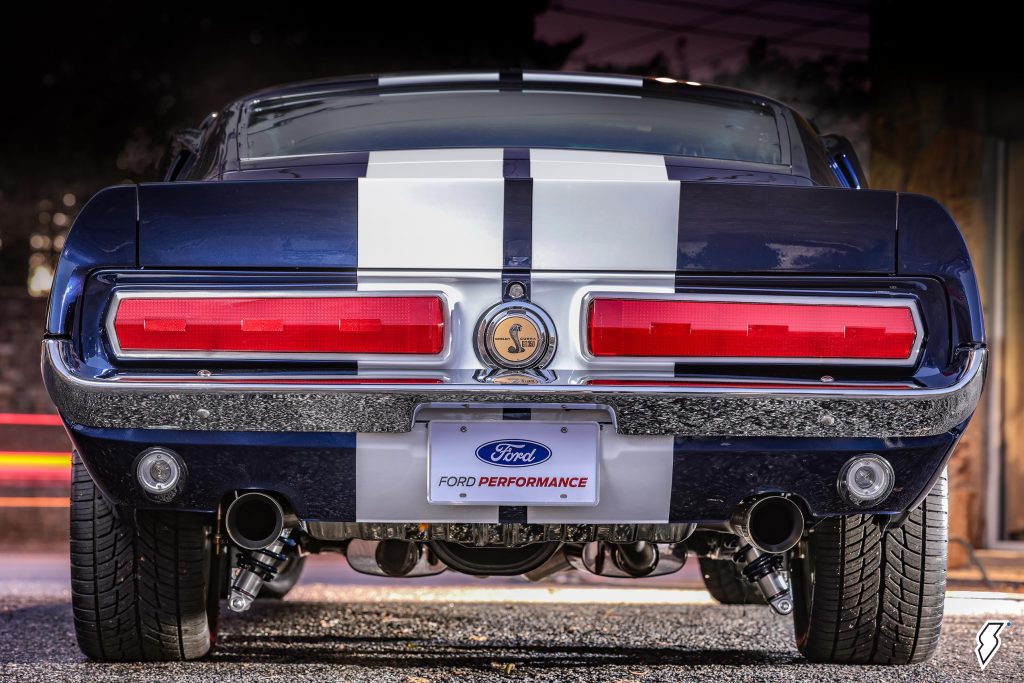
That doesn’t mean Thomas didn’t consider going a more traditional—and safer—route with his career. “In 2018 after high school, I was set to probably go to Georgia Tech or another engineering school,” he said. However, a fear of being “stuck behind a desk” made him reconsider. “In my head, engineering would be more hands-on. I interned with a couple of civil engineers. You go out and see a field project in the real world, but other than that, you’re mostly behind a desk,” he said, adding, “I want to have my hands deep in a project. I don’t want to design it and be like, ‘Here you go, here’s my design.’ I want to walk that design all the way through.”
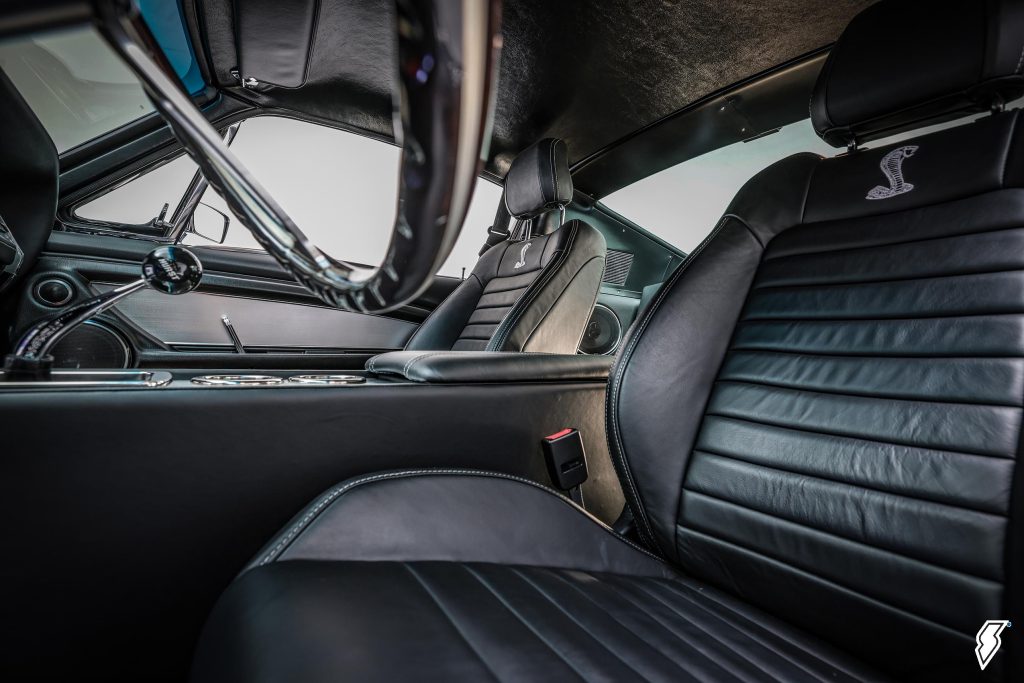
Thomas got his first taste of wrenching on a 1967 Mustang he bought when he was 16. “The only thing I did on that car was some top-end engine work and a little bit of transmission work. Other than that, it was just a driver. We drove it around, and I got the feel of owning a classic car,” he said.
He kept that Mustang until 2021 and learned what he liked—and didn’t like—about living with 50-year-old car. “I kinda got my roots started in that car. I got a feel for how terrible classic cars drive, and that helped me figure out ahead of time what I needed to do to the Shelby to make it more of a driver.” Why didn’t he stick with that first Mustang? “It was a coupe, and I always wanted to do a Shelby, so it had to be a fastback,” Thomas explained.
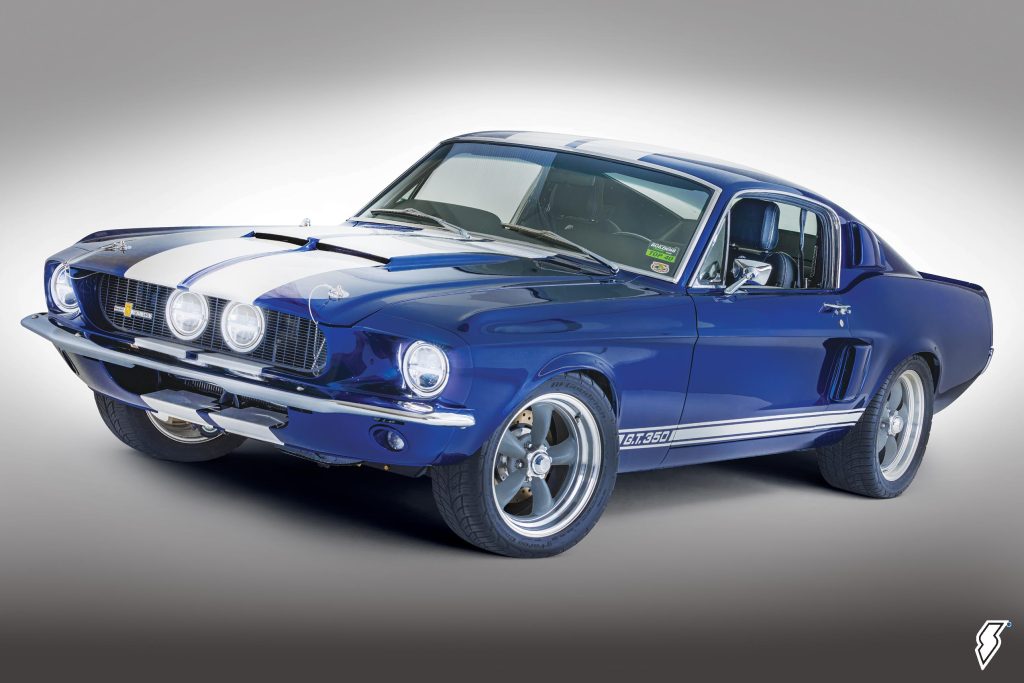
He purchased this car in the fall of 2018, around the same time he enrolled at Athens Technical College. He described its condition simply: “It was bad. You could step through it.” Not yet possessing the skills to straighten out the battered sheetmetal, Thomas farmed out the first stage of the project. “In 2018, I didn’t have enough experience with a frame machine to do any metalwork. I had a guy in Cumming, GA do all the sheetmetal work. He works on just that year Mustang—he has a jig and everything. I had him do the metalwork to get the car rehabilitated. He did the floor, firewall, all kinds of stuff. I just wasn’t far along enough and wanted to get started,” he said.
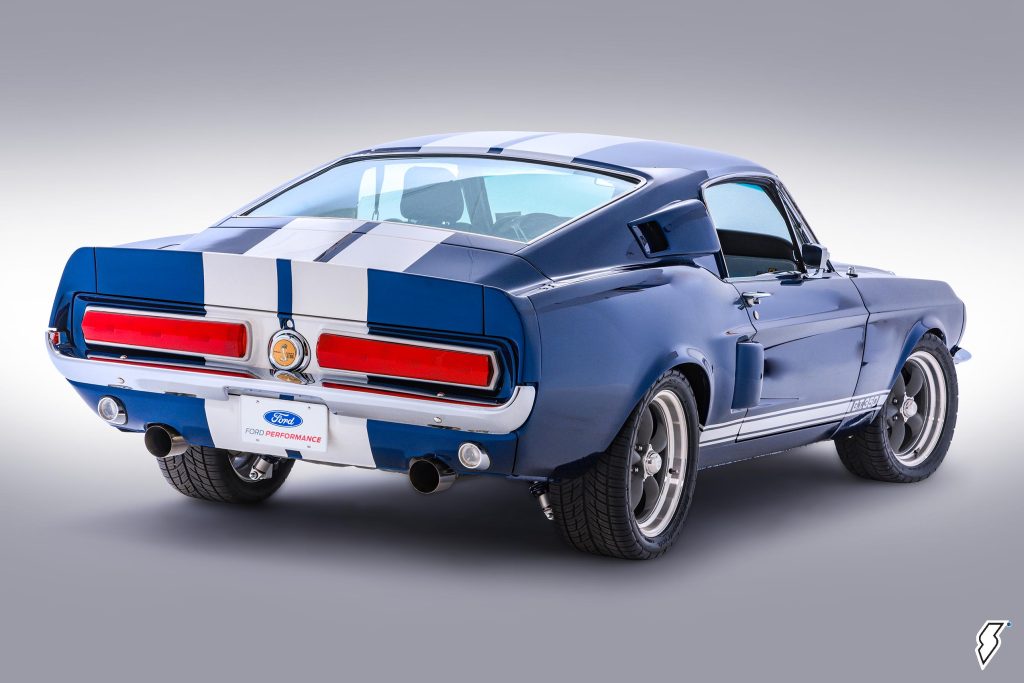
Thomas’s original goal at Athens Tech was to learn paint. Once the Mustang was ready, he had to get the okay to bring the car into the school’s shop from Greg Thomas, the Automotive Collision Repair Program Chair. “I asked my teacher one day, ‘I have this project, can I do a couple things on it?’ I brought it in, did some stuff, and then I kept bringing it in,” he said. While it’s common for students to bring in their own work, Thomas was the first student to complete a project this extensive—essentially a ground-up restoration. “Once I got it to Athens Tech, it was just day-in, day-out, working on it constantly,” Thomas added.

The car was fully assembled in epoxy primer prior to final paint, but first, all the special body parts that make it a GT350 tribute had to fit properly—no small task. “The hood, the nose, the whole back of the car, and the side scoops; that’s all fiberglass so none of it fit,” Thomas said, without exaggeration. “The hood had gaps of about 1/2″, so you could stick your whole hand in them,” he said. “Getting all the fiberglass dialed in took about six to seven months.”
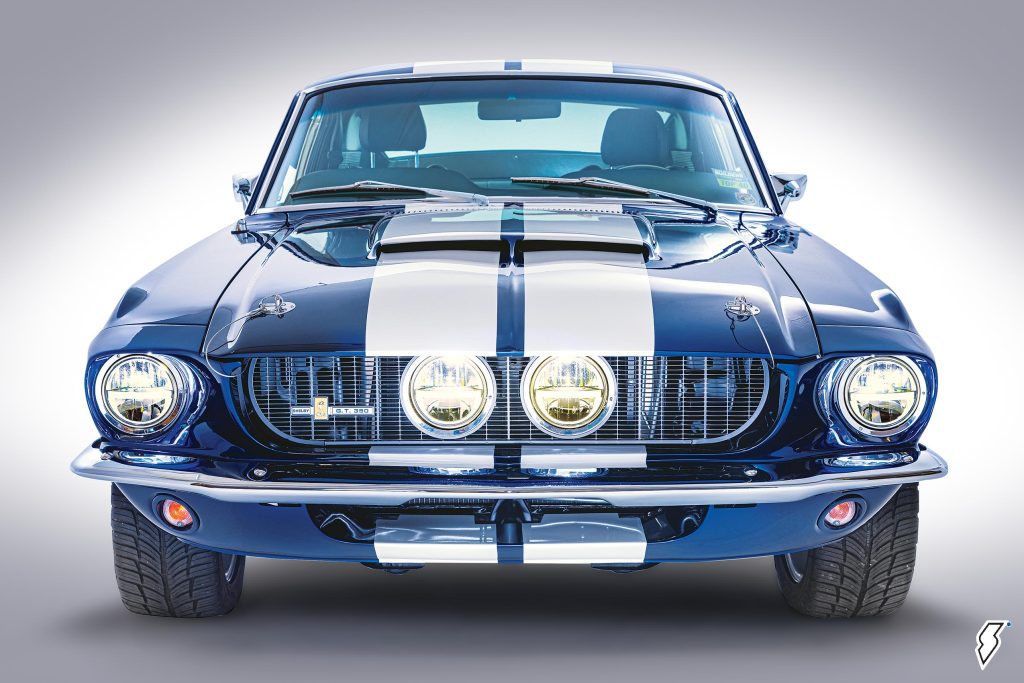
Thomas laid down the final application of dark metallic blue pearl (a custom blend similar to Shelby’s Kona Blue) and white in October of 2020—a process that took upwards of 28 hours. The painted stripes have 15 dimensions from the front of the Mustang to the rear, just like a real GT350. “Carroll Shelby designed the stripes so when you were racing, you could hold a racing line. The contour of the hood is curved, so your stripes would be curved to make it look like a straight line,” Thomas explained. “When you look at the front of the car, the center is exactly two inches of blue. But on the side if you took a measuring stick, you would see it’s a quarter to three-eighths of an inch taper up along to the roof, and then to the back it’s different. A true Shelby has the same stripes.”
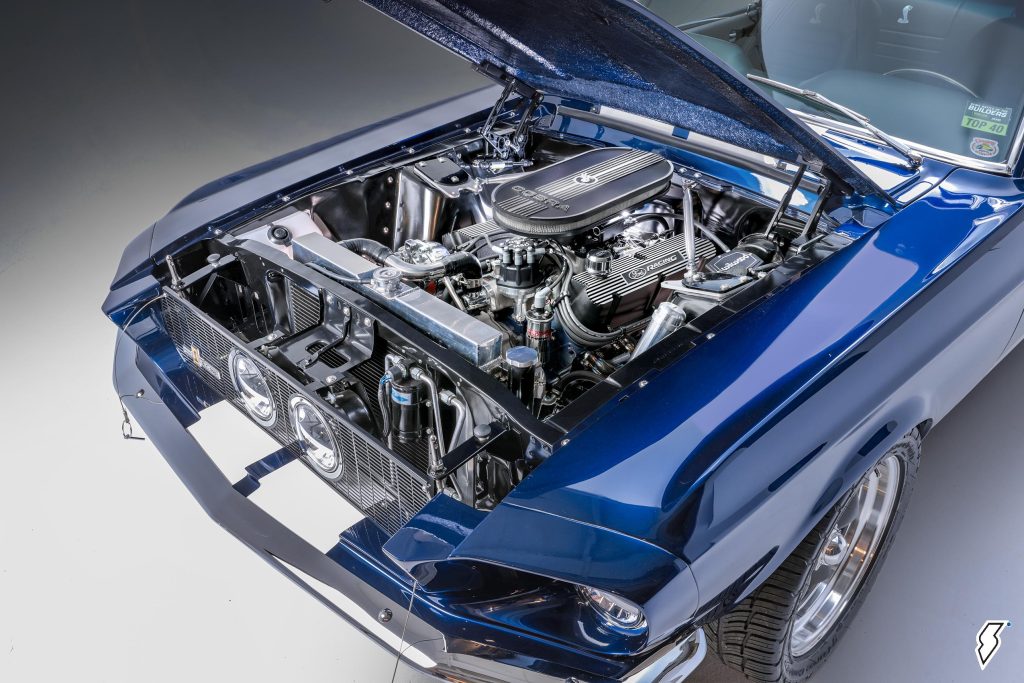
While the Mustang is a very streetable build that neatly straddles the line between resto-mod and pro touring, that doesn’t mean Thomas skimped on the powertrain or chassis. As a former drag car, it had a radical cam and didn’t want to run below 3,500 rpm. An engine rebuild was performed under guidance from Darrell Gabriel of Gabriel’s Engines in Winterville, GA, with the 289 getting a fresh set of 9.0:1 pistons, a balanced rotating assembly, COMP Cams® camshaft and valvetrain, and 351W heads. It was topped off with Holley Sniper EFI for modern drivability, and backed by a T-5 manual transmission rebuilt by Thomas to World Class specs, after he watched a few how-to videos on YouTube and received some guidance from the professionals at TREMEC.

The transmission sends power to a Ford 8.8″ axle loaded with a Motive Gear 3.55:1 gearset, Traction-Lok differential, and 31-spline axles. Thomas also handled the rear end rebuild with help from friend and race car builder Toni Holliman. As Toni put it, “With Thomas, it’s always ‘Show me,’ never ‘Do it for me.’”
Under the Mustang, a Total Control Products coilover conversion handles front suspension duties and a RideTech 4-link keeps the rear axle in line. A Flaming River rack and pinion provides steering precision Ford’s engineers could’ve only dreamed of. Braking is handled by a Wilwood 6-piston front/4-piston rear combo, and the chassis is rounded out by 17″ American Racing Torq-Thrust II wheels wrapped in BFGoodrich rubber. It’s a setup that looks classic and period-correct, but in a modern size that doesn’t sacrifice performance.
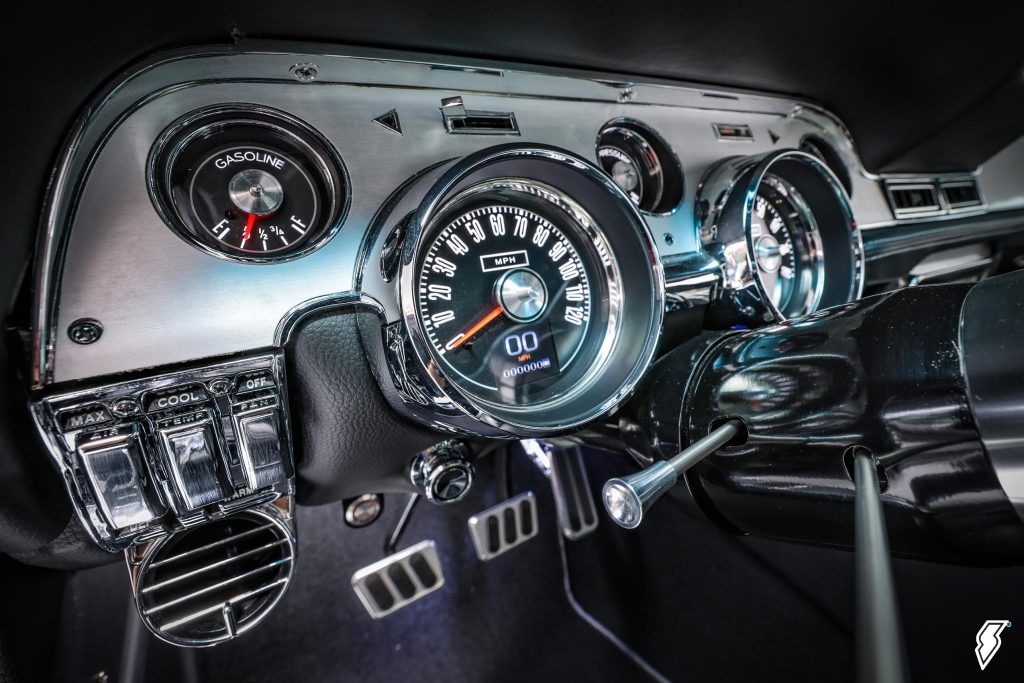
Thomas’s desire to learn is matched by his ability to master new skills. “I can pick up things pretty quickly. This year, I learned TIG welding in three months and now I can weld two razor blades together, no problem,” he said. “I like watching how the fabricators work because for me, if you can show me how you do it, I don’t need words. If you show me what you’re doing with your hands, you’ve already let the secret out. I can figure out the rest,” he added, grinning.
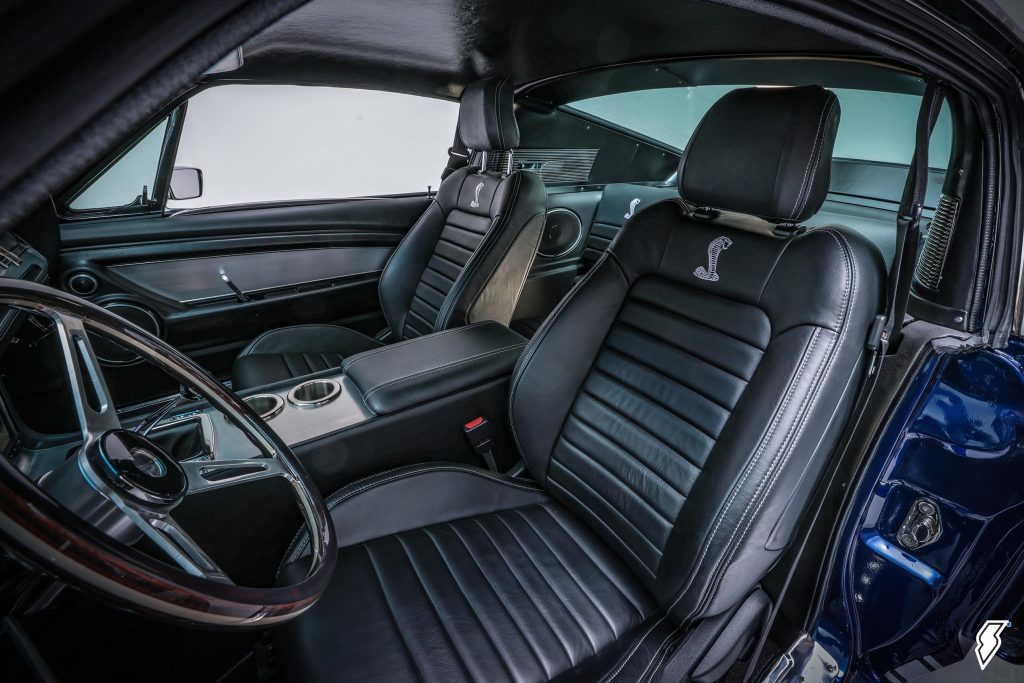
Thomas’s vision is perhaps most apparent in the Mustang’s cockpit. The heated power seats are from a 2017 Mustang, reupholstered in black Italian leather with light gray stitching. He designed the center console from scratch using CAD software, then had it machined from composite wood. It features CNC-machined stainless steel trim and cupholders—definitely not an option in 1967! Other modern amenities include Dakota Digital RTX gauges, Digital Guard Dawg push-button start, power windows and locks, and a Sony touchscreen head unit.
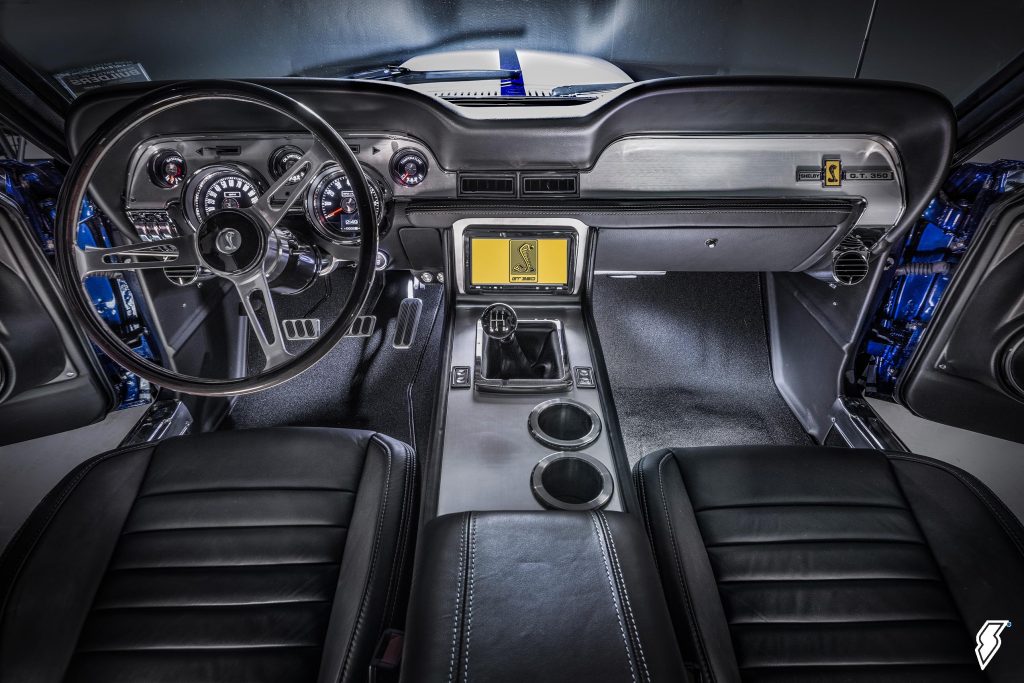
It’s natural to wonder how a young man, just out of high school, could afford to create such a high-end build. It began with savings from a landscape company that Thomas owned and operated since 2014. And, of course he had help from a mother and father who believe in his career as a top-level builder. “If I wouldn’t have had parents who understood, I wouldn’t have been able to do it,” Thomas said, adding, “It’s not something everyone can do, unfortunately. I wish it was, but it’s a lot of money up front. I went to technical college just so I could learn how to do everything.”
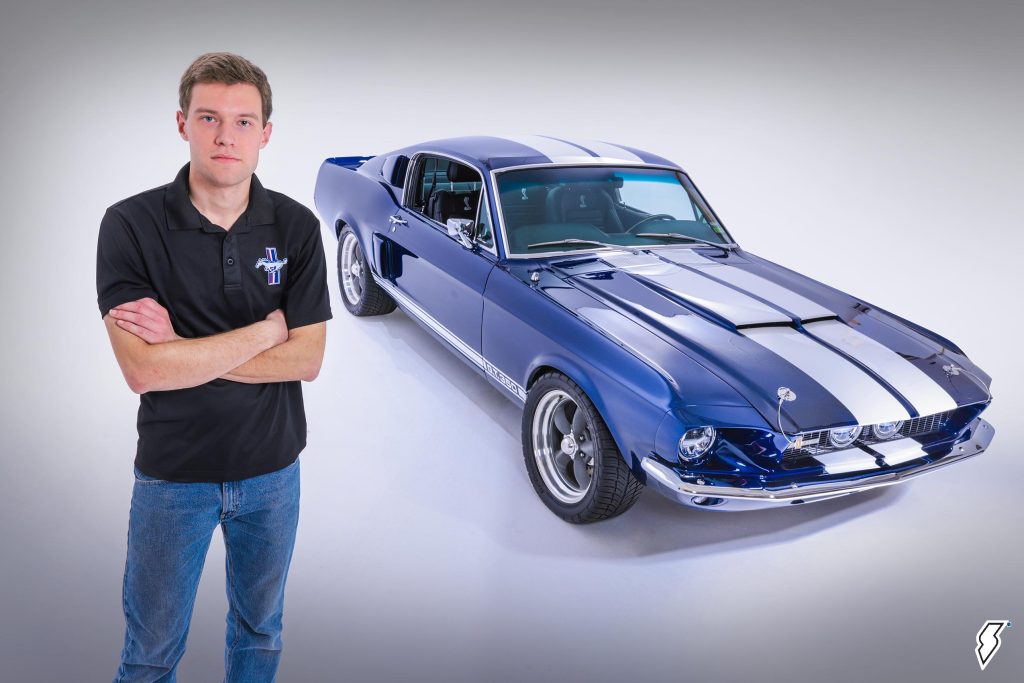
What’s next for Thomas Dickerson? He currently has a very extensive 1967 Chevy C10 build in progress for SEMA and a customer order for another Mustang. The car featured here is essentially a prototype for limited production of more GT350 and GT500 Mustangs with engine options that promise to take performance to the next level.
It’s early, but right now it’s fair to say things are going exactly as planned!
***
1967 Ford Mustang Shelby GT350 Tribute Fast Specs
***
Body & Chassis
- Total Control Products front suspension with VariShock coilovers and 1″ sway bar
- RideTech 4-link rear suspension
- RideTech HQ Series coilovers
- Flaming River rack and pinion
- Wilwood 6-piston front/4-piston rear brake calipers
- Wilwood drilled and slotted brake rotors
- Wilwood master cylinder/proportioning valve combo
- E-Stopp push-button electric emergency brake
Wheels & Tires
- American Racing Torq-Thrust II, 17″ x 7″ (front), 17″ x 8″ (rear)
- BFGoodrich g-Force Comp-2 A/S, 245/45ZR17 (front), 275/40ZR17 (rear)
Engine
- Ford 289 cu. in. (bored .030 over) with 351W C9OE heads, balanced stock rotating assembly, and 9.0:1 pistons; rebuilt by Gabriel’s Engines, Winterville, GA and Thomas Dickerson
- Hastings piston rings
- Clevite bearings
- COMP Cams® Xtreme Energy camshaft (.477″/.484″ lift, 212°/218° duration @ .050″)
- COMP Cams High Energy hydraulic lifters
- COMP Cams High Energy roller rocker arms
- Ford Performance valve covers
- March Performance accessory drive
Ignition & Electronics
- MSD Pro-Billet distributor
- MSD Blaster 2 ignition coil
- MSD 8.5mm Super Conductor spark plug wires
- Powermaster PowerMax starter
- Powermaster alternator
- Optima REDTOP® battery
Fueling
- Holley Sniper EFI
- Edelbrock Performer RPM intake manifold
- Ford Performance Parts oval air cleaner
- Holley OEM-style in-tank fuel pump
Exhaust
Cooling
- Champion radiator
- Edelbrock Victor series water pump
- Spal electric fans
Clutch & Driveline
- BorgWarner T-5 transmission, rebuilt to World Class specs by Thomas Dickerson
- Modern DriveLine clutch and shifter
- Ford 8.8″ rear end with 31-spline axles, Traction-Lok differential, and Motive Gear 3.55:1 ring and pinion
Exterior
- Paint and bodywork by Thomas Dickerson
- PPG Deltron paint, custom dark metallic blue pearl/white stripes
- Fiberglass GT350 hood and front fascia
- Ringbrothers hood hinges
- Digi-Tails LED taillights
Interior
- Designed by Thomas Dickerson
- 2017 Ford Mustang front (power adjustable and heated)/stock rear, reupholstered in black Italian leather with light gray stitching
- Custom-designed composite wood console with CNC-machined stainless steel radio bezel, shifter surround, and cupholders
- Dakota Digital RTX gauges
- Brushed aluminum dashboard trim
- Sony 7″ touchscreen sound system
- Volante S6 Series steering wheel
- ididit tilt steering column
- Digital Guard Dawg push-button start
- Dakota Digital power door lock actuators
- Nu-Relics power window regulators
Special Thanks To:
My mom, dad, family, and friends for their continued support; Darrell and Frankie Gabriel of Gabriel’s Engines, Toni Holliman, Troy’s Muffler, and Greg Thomas at Athens Technical College
Photography By: Haigwood Studios
Art Direction By: Aaron Gray

Incredible work of art created by Thomas Dickerson! It was our pleasure to capture these images of an iconic vehicle and an exceptional young man.
Great article Aaron!
One of the best styling changes for 1967-68 Mustangs were the rear end and taillights. Why anyone would use Shelby’s design, or lack thereof, has always been a mystery to me. The tacked on Shelby parts, and especially the lights destroy the look of the rear of the car in my opinion.